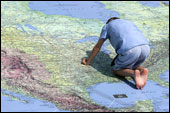 Featured Links
Featured Links
Related Policy Centers
Related UI Researchers
Publications on US Cities/Communities
How Cultural Heritage Organizations Serve Communities: Priorities, Strengths, and Challenges (Policy Briefs)Author(s): Carole E. RosensteinAcross the United States, nonprofit cultural heritage organizations serve communities by helping people to remember their shared experiences and aspirations, building and sustaining a sense of community through fairs, folklife programs, public celebrations of music, food, and holidays. This brief uses NCCS Form 990 data to examine the finances and programs of these organizations. It finds that cultural heritage organizations tend to be small, to blend program areas, to make cultural difference central to their work, and they show important program and organizational variation across ethnic groups. These key characteristics should be taken into account when supporting cultural heritage organizations.
Prisoner Reentry: Addressing the Challenges in Weed and Seed Communities (Research Report)Author(s): Amy L. Solomon,
Tobi Palmer,
Alvin Atkinson,
Joanne Davidson,
Lynn HarveyIn order to understand the extent to which Weed and Seed sites are engaged in prisoner reentry efforts, the Department of Justice's Community Capacity Development Office, the Center for Community Safety of Winston-Salem State University, and the Urban Institute surveyed Weed and Seed sites around the country. This report summarizes the responses from the survey, illustrating the various ways that Weed and Seed sites are focusing on prisoner reentry and working with partner organizations to reduce recidivism and create safer, healthier communities.
Understanding Diverse Neighborhoods in an Era of Demographic Change (Research Report)Author(s): Margery Austin Turner,
Julie FendersonPolicymakers and practitioners need new ways to understand patterns of neighborhood diversity (racial, ethnic, and economic) in their communities, and to track changes over time. This paper documents the prevalence of diverse neighborhoods, describes their geographic distribution, and explores how they changed between 1990 and 2000. It uses decennial census data to develop a new set of neighborhood typologies--grouping tracts into categories that reflect important differences in the racial, ethnic, and income groups represented. These typologies provide updated tools for describing the extent of neighborhood diversity and exploring the implications of diversity for families and communities.
What Happens to Victims?: A Research Guide for Disaster-Response Studies (Research Report)Author(s): Harry P. Hatry,
Martin D. Abravanel,
Shelli B. RossmanThis report "What Happens to Victims? A Research Guide for Disaster-Response Studies" provides a starting point for research and evaluation studies. It provides a series of "checklists" of outcome and service quality indicators, and related information, considered pertinent to studying emergency services responses for a range of critical service areas and covering a wide array of conditions likely to be important to disaster victims. The intent is to establish starting points for assessments of the extent to which victim services needs are met during and following disasters.
Kids Need Help to the Silver Lining (Opinion)Author(s): Olivia GoldenOlivia Golden, a senior fellow at the Urban Institute and a former assistant secretary for children and families at the U.S. Department of Health and Human Services, explains, in a New Orleans Times-Picayune commentary, how cost-effective programs like Early Head Start and Head Start can help heal the trauma suffered by babies, toddlers and older children affected by Hurricane Katrina.
| Posted: July 15, 2006 | Availability: HTML |

